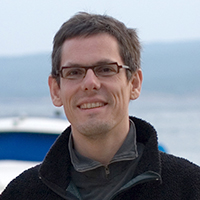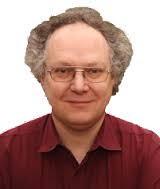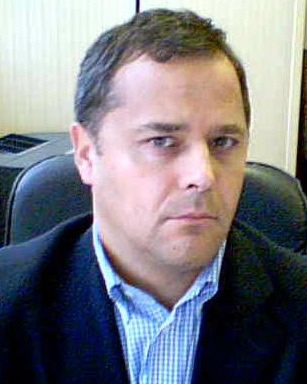- Home
- Objective
- Keynote Speakers
Mohamad Sawan Canada Research Chair in Smart Medical Devices Polystim Neurotechnologies Laboratory Polytechnique Montreal, Canada
Prof. Mohamad Sawan
Fabrice Wendling (PhD) holds a position of Director of Research at INSERM

Prof. fabrice Wendling
Metin Akay is currently the founding chair of the new Biomedical Engineering Department and the John S. Dunn professor of biomedical engineering at the University of Houston

Prof. Miten AKAY
Bart Bijnens

Prof. Bart Bijnens
ICREA Research Professor in the Department of Information and Communication Technologies at Universitat Pompeu Fabra (UPF)
Patrick Flandrin

Prof. Patrick Flandrin
CNRS "Research Director" at École normale supérieure de Lyon
Ghaleb Husseini Professor- AUS Chemical Eng. Department, Sharjah, UAE
 Prof. Ghaleb Husseini
Prof. Ghaleb Husseini
Peter Stadler Algorithms, Computing in Mathematics, Natural Science, Engineering and Medicine, Bioinformatics University of Leipzig ,
 Prof. Peter Stadler
Prof. Peter Stadler- Invited Speakers
- Partner Universities
- Lebanese University, LU, LB
- Saint Joseph University, USJ, LB
- Notre Dame University, NDU, LB
- Rafic Hariri University, RHU, LB
- Islamic Univ. of Lebanon,IUL, LB
- Saint Esprit of Kaslic Univ. USEK, LB
- More...
- Modality and submission
Paper presentation and submission

The conference will consist of oral presentations of fifteen minutes with few plenary sessions. All submitted papers will be peer reviewed. Accepted papers will be published as a collective work in an electronic format and will be submitted for inclusion to IEEE Xplore
 Jean-Marc Girault,
Jean-Marc Girault,Ph.D. degree in signal processing in medical ultrasound imaging Francois Rabelais University of Tours
Title: A survey of complexity analysis of time series derived from nonlinear dynamical systems
Abstract:
For over a century, many researchers have studied the dynamic changes in nonlinear dynamical systems because understanding transitions between regular, laminar and chaotic behaviors is essential to understanding the underlying mechanisms behind complex systems. Most studies were performed on the only available practical information, i.e. time series. In view of its ubiquity, studying time series is today an essential and challenging step to forecasting and detecting transitions.
Studying transitions in low dimensional nonlinear dynamical systems is a complex problem for which there is not yet a simple and a global numerical method able to detect for examples chaotic-chaotic, chaotic-periodic, periodic-periodic bifurcations or symmetry-breaking and symmetry-increasing bifurcations.
Sudden changes in complexity descriptors often reveal a deep modification of the operating mode of the system under study. Several complexity descriptors derived from different theories such as chaotic theory, geometric theory and information theory can be proposed as interesting alternatives.
In this presentation I propose to review a certain number of existing measures of complexity and I complete it by presenting new complexity descriptors derived from the information theory through the concept of entropy (n-order fuzzy entropy, maximum similarity entropy), from the geometric theory through the concept of multifractal (coarse-grained multifractality analysis) and from the chaotic theory through the concept of recurrence (unbiased recurrence plots).Recently I proposed a new paradigm that should revolutionized the analysis of times series. This very promising concept based on time series symmetry (symmetry plots) encompasses the notion of recurrence. Fractional Brownian motion, Lorenz and Logistic time series were simulated to validate the different methods proposed, and fetal heart rate signals were used to discriminate normal from abnormal fetuses.Biography:Jean-Marc Girault received his master’s degree in signal processing and biological and medical imaging from the University of Angers, France, in 1996. He obtained his Ph.D. degree in signal processing in medical ultrasound imaging from the Francois Rabelais University of Tours, France, in 1999. Finally, he obtained his qualification for research supervision in signal processing in medical ultrasound imaging from the Francois-Rabelais University of Tours, in 2010. He has been a lecturer in signal processing at the University of Tours since 2001. His principle results achieved were in nonlinear signal analysis (complexity analysis with recurrence, entropies, symmetries, and multifractals) and processing (modeling and identification) and in ultrasound imaging. Most important findings were in optimal command (deterministic and stochastic) and blind deconvolution in ultrasound imaging, in sub-ultra-harmonics modeling and identification and in Doppler detectors and estimators (rhythm, velocity, and energy) applied for the studies involving microemboli and distressed foetus. He has written more than 90 scientific communications on medical ultrasound imaging and signal processing. Since 2005, he has been responsible for the master’s degree in medical imaging at the Francois-Rabelais University of Tours. At the same time, he coordinates the Signal-Imaging group in the team Imaging and Ultrasound in the research unit Imaging and Brain UMR U930, Tours, France
- Keynote Speakers









 Mohamad Sawan
Mohamad Sawan